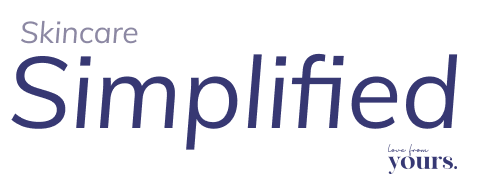Who doesn’t love a charming blush? But what happens when it becomes uncontrollable and long-lasting? And do you find yourself avoiding red wine or eating spicy foods in order to prevent heat and flushing on your face and nose? If this sounds familiar, it could be a sign that you have rosacea — and try not to ignore it, as it’s a progressive condition. You need a proper medical diagnosis and the correct treatment, because incorrect treatment can make things worse. Here’s all that you need to know!
What is rosacea?
- Rosacea is an inflammatory skin condition that isn’t yet well understood.
- In most cases, it affects adults, especially women and people with fair skin, aged between 30 and 60. Men usually get it more severely.
- Rosacea can’t be cured, unfortunately. It is a chronic condition, flaring up and getting worse at times, then calming down again. But you can improve its appearance and lessen symptoms with the right treatment and skincare.
- Telltale symptoms include flushing, redness and increased sensitivity on the face (mostly cheeks, nose, chin and forehead). But it can extend to your scalp, neck, chest and upper back. This redness can be permanent or come and go in a flush.
- It’s often accompanied by small ‘broken’ capillaries or thread veins on the nose and cheeks.
- It can also affect the eyes, where it causes redness and swelling of the eyelids.
- As rosacea progresses, people often get small red, pus-filled bumps on their nose and cheeks.
- If you don’t treat your rosacea, it will most likely get worse. Severe cases result in a lumpy, enlarged, pitted nose known unkindly – and incorrectly! – as a ‘drinker’s nose’. This can have a devastating impact on your self-esteem and self-confidence.
Rosacea management can help prevent this severe consequence. A dermatologist will assess and diagnose the condition and give you the correct treatment plan for your needs.
Mistaken identity
Rosacea is often mistaken for other skin or health conditions, because of superficial similarities. This is why a correct diagnosis by a medical professional is important, as the wrong treatment can make rosacea worse.
- It is often mistaken for adult acne (it used to be called acne rosacea!) because of the pustules (red, pus-filled bumps). The big difference is that when you look carefully, rosacea sufferers have no blackheads or whiteheads, whereas acne-prone skin does. Treatments used for acne like benzoyl peroxide and salicylic acid or BHA can irritate rosacea and cause flare-ups.
- Because of the skin irritation and sensitivity, people also mistake it for a skin allergy, allergic contact dermatitis, or eczema.
- Other similar but mistaken conditions: Lupus, drug-induced redness.
What causes rosacea?
The cause of rosacea hasn’t been pinpointed precisely, but a combination of hereditary (check those parental genes), environmental factors and gut health have been fingered.
Rosacea triggers
Some things we do aggravate our rosacea by increasing our blood flow to the skin’s surface and causing inflammation, so it’s best to avoid these:
- Drinking alcohol and eating spicy food
- Extremes in temperature
- Hot baths, steam rooms and saunas
- Stress, embarrassment and anger
- Strenuous exercise
- Exposing your skin to certain chemicals – swimming pool chlorine, for instance
- Sitting in front of a fire
- Sunlight
- Corticosteroids (cortisone creams, etc.)
- Wind and chill
- Blood vessel-dilating drugs, including some blood pressure medications
- Harsh skincare, such as products that strip your skin barrier and irritating ingredients.
What to avoid
Products: Scrub exfoliators, regular toners that strip the skin barrier, especially witch hazel.
Ingredients in skincare: alcohol, alpha-lipoic acid, benzoic acid, camphor, cinnamon oil, cocoa butter, coconut oil, DMAE, fragrance, glycolic acid, lactic acid, menthol, parabens, peppermint oil and quarternium-15, sodium lauryl sulfate (often found in shampoos and toothpaste), urea.
Sunscreens that contain skin-irritating avobenzone, PABA, benzophenone, butyl methoxydibenzoylmethane, octyl methoxycinnamate, Methyl benzylidene camphor, phenyl benzimidazole sulfonic acid.
Treat your rosacea correctly
Start with the gut
Research in the last few years shows that an imbalance in the gut bacteria can trigger rosacea. When digestive issues are cleared up, in many people, rosacea is cleared as well.
This could be through a change in diet, taking an omega-3-fatty acid supplement, and getting a good balance of ‘good’ gut bacteria through probiotic and prebiotic foods and supplements.
Choosing the right skincare
Keep your skincare routine simple. Your main priority is to start rebuilding your skin’s protective barrier and to soothe inflammation and redness.
Cleanser: Look for mild, soap-free and gentle cleansers that have a soothing action.
Barrier repair & moisture: Look for products with soothing ingredients such as green tea, niacinamide, aloe, argan oil, chamomile, resveratrol. Ingredients such as peptides and ceramides for barrier repair. They should be gentle and help to reduce redness and maintain a healthy skin barrier.
Our Bounce Back Balancing Toner is no traditional harsh, skin-stripping toner. It is filled with 5 essential minerals that strengthen the skin barrier and promote growth of healthy skin cells. It reactivates your skin’s natural defenses and helps your skin rebuild itself and repair itself over the long term. Anti-oxidant niacinamide (vitamin B3) and our Epidermist plankton extract have a soothing, skin-repairing and barrier-building effect.
Anti-redness serums or creams help reduce redness by rebuilding healthy blood vessels and reducing skin inflammation. Look for lightly tinted products to help disguise the red broken capillaries on the face.
Our Personalized Skincare routines, which include serums and moisturizers for day and night, cater for all skin types, including sensitive skin. Get a curated routine tailored to your rosacea-prone skin, just by taking our short 3-min skin assessment and selfie analysis!

Selfie Analysis
Wear sunscreen that won’t irritate your sensitive skin, like our Sunny Side Up sunscreen mist, which is suitable for rosacea-prone skin. Only use sunscreens that contain zinc oxide, titanium dioxide – or both, which are fragrance-free and hypoallergenic. Make sure it offers SPF 30 or higher protection.
Medical treatments
Your rosacea can be managed very effectively once you receive a proper diagnosis and use the right treatments and skincare.
Dermatologists will give you the right solutions, depending on your individual rosacea.
This could include a combination of oral medication, topical creams, light therapies and even surgery to treat your symptoms, if they are severe.
Unsure about whether you have rosacea?
Our selfie analysis, which uses computer vision technology, can help. Our 3-minute assessment will assess your skin condition and concerns and provide a personalized skincare routine that will cater to your unique skin.
Remember to also seek advice from a certified professional for a medical diagnosis.
Treat the condition as soon as you become aware of it, in order to slow and lessen its progression – it’s never too late to seek help!






